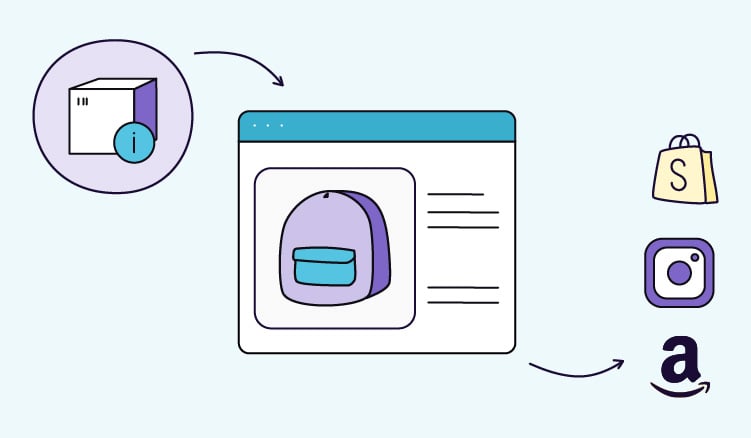Who runs the world? Data! Who thought that it (data) would become the most powerful resource in the world, surpassing oil? If we put it that way, it’s a pretty crazy thought. But, when looking at the insights and knowledge it can bring to the economy, it's no surprise.
Data can help businesses improve customer experience, redefine marketing strategies, see company performance, and understand their customers and what they want better.
Welcome Google Analytics ...
When we think of marketing data, Google Analytics pops up. Since its launch in November 2005, it’s become the preferred choice for many businesses. It’s free and it gets the job done.
Fast-forward to now, and there's a choice between standard or enhanced ecommerce tracking.
The purpose of both is to track data, which is why over 50 million SMBs use Google Analytics. But, even though both tools track ecommerce data, they are vastly different.
What does standard ecommerce tracking do?
Standard ecommerce tracks, as its name explains, the “standard” metrics.
This includes the following:
- Overview: general insight on your website's conversion rate, average order value, etc.
- Product performance: how many, the quantity, the average price of the products sold
- Sales performance: the individual's transaction, revenue, tax, and shipping.
- Transactions: revenue, tax, shipping, and quantity by transaction ID.
- Time to purchase: how long it took a visitor to purchase a product.
From these insights, you can find out:
- Which products are higher in demand, and which marketing efforts are working.
- The revenue per transaction, and the number of products per transaction.
- How long it takes for a customer to decide to purchase. This is valuable because 92% of first-time visitors aren’t coming to buy on their first visit. Depending on your sale cycle, you can see to make reliable predictions, improve site design to lead to a purchase, and have more sales and discounts to help bring in more sales.
![]()
Note: While the standard ecommerce tracking gives valuable insight, it is limited, which is where having an enhanced ecommerce tracking can be super valuable.
What does enhanced ecommerce tracking do?
It monitors. When Google announced the additional tracking monitor in 2014, it promised to offer marketers additional information. This helps them see the ins and outs of the buying process in more detail. With the enhanced tracking method, you can see the following:
- Shopping and purchasing behavior: lets you look at the shopping activity such as product page views, when a visitor adds and removes products from shopping carts, initiates, abandons, and completes a transaction.
- Economic performance: this gives new meaning to the overview and product performance section in the standard tool. Now, you have data for the revenue and conversion rates a product generates, how many products the average transaction includes, the average order value, refunds issues, how often a customer adds an item to their cart, and those who made a purchase after viewing product detail pages.
- Merchandising success: not only can you measure product performance, but you can also measure the internal and external marketing efforts that help those products. You can use an affiliates code to help track revenue, transactions, and the average order value from affiliate sites. You can also track the coupons and internal promotions to see how effective they were for you, as the product coupon report shows you how effective coupons were in revenue, unique purchases, and product revenue per purchase. You can also see how a sale went on your website and track insights on how many views, and clicks it got as well as the click-through rate.
- Product attribution: with enhanced analytics, the product list performance report offers you insight into product attribution data. In the report, you get to see the “last action” attribute, which shows you what last product list a user engaged with before it became a conversion. This includes whether customers added an item to their cart checked out, or made a purchase. Helping you understand what drove a conversion - was it a category page, search results page, or merchandising page.
![]()
From these additional insights, you can find out:
- The total revenue from your ecommerce store's transactions
- The ratio of transactions to sessions
- The total number of finished transactions from your ecommerce store
- The average value of each order
- The average quantity of products sold per transaction
- The information about your campaigns, order coupon codes, affiliation
- More information on the top sellers by product, category, and brand
- Users' shopping behavior at each stage of your purchase funnel and more
- How successfully have your users moved through your checkout process
![]()
Note: While the enhanced ecommerce tracking report offers more insight it is more complex. With a standard tracking, it can take about 3-5 minutes as you only have to set up a single tag. Enhanced tracking, on the other hand, can be difficult as you have to set up a set of events using Google tag manager. Those events include adding to the cart, product views started checkout, conversions, quantity, order value, and more. It then boils down to whether a business can do so or not.
What should businesses do?
While enhanced ecommerce tracking has its fair share of benefits, many businesses don’t use it due to its complexities. Not only is it complex, but some ecommerce platforms such as Shopify, BigCommerce, and WooCommerce offer these insights already.
But wouldn't it be better to see it on one dashboard? Along with your entire product catalog? We think so. You can do this with the Plytix product information management system. Manage all your product data in one place, while viewing real-time analytics in the same tool.
What can a PIM do for ecommerce?
Why invest in a costly ecommerce analytics software when you can have Google Analytics and PIM. Our product analytics tool feature pulls through data from Google Analytics to Plytix.
It is connected to Google Analytics, and you can view important data such as product impressions and checkout funnel metrics, analyze and compare product performance, and optimize product content for your web store and marketplaces from one platform.
No more jumping from one tool to another.
Ff you don’t believe this next-generation PIM solution works as an ecommerce analytics platform, request a demo, and we’ll explain further.



